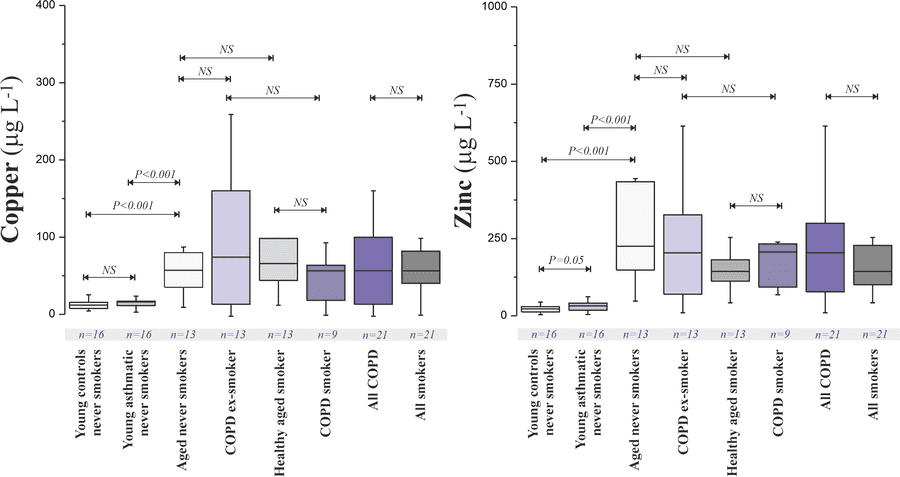Abstract
Background: COPD is associated with increased oxidative stress in the lungs. The extent to which this contributes to disease etiology is unclear, partially due to the underlying role of physiologic aging.
Aim and objectives: We have demonstrated increased oxidative stress in bronchoalveolar lavage (BAL) samples from COPD patients but reported these changes to be partially explained by subject age. Here we examined if oxidative stress in the lungs could be related to increased metal pools at the air-lung interface.
Methods: BAL from young and aged never smokers, non-smoking young mild asthmatics, aged smokers without obstructive lung disease and COPD patients, both current and ex-smokers, were analysed for a range of transition metals (Fe, Cu, Zn, As, Cd) using inductively coupled plasma mass spectroscopy.
Results: BAL Cu and Zn concentrations were lower in young adults and asthmatics (p<0.001 for both) relative to the aged groups, irrespective of smoking or disease status ? see figure. BAL Cu was significantly associated with a range of markers of oxidative stress: glutathione disulphide (r=0.50, P<0.001), dehydroascorbate (r=0.67, P<0.001) and 4-Hydroxynonenal (r=0.43, P<0.001).
Conclusions: These data demonstrate that age-related increases in respiratory tract Cu concentrations contribute to increased levels of oxidative stress at the air-lung interface.
